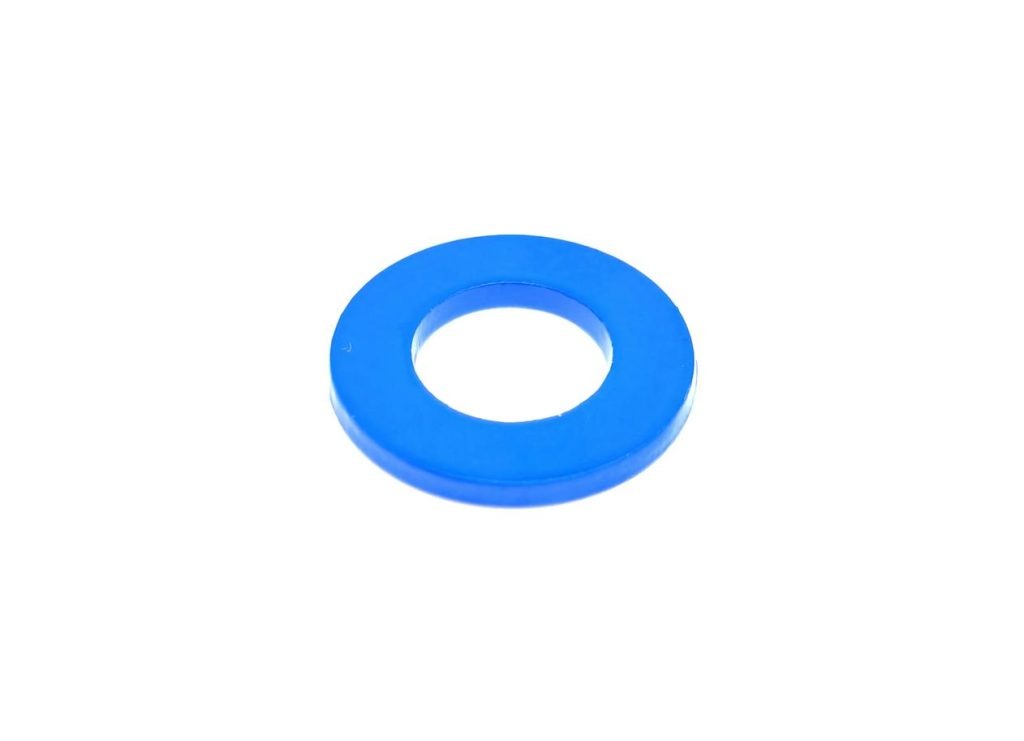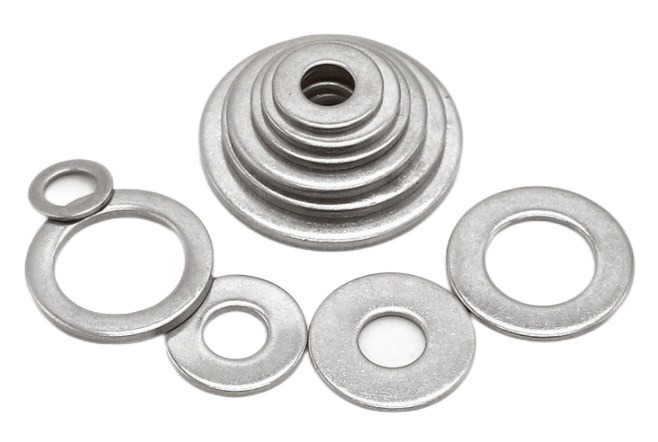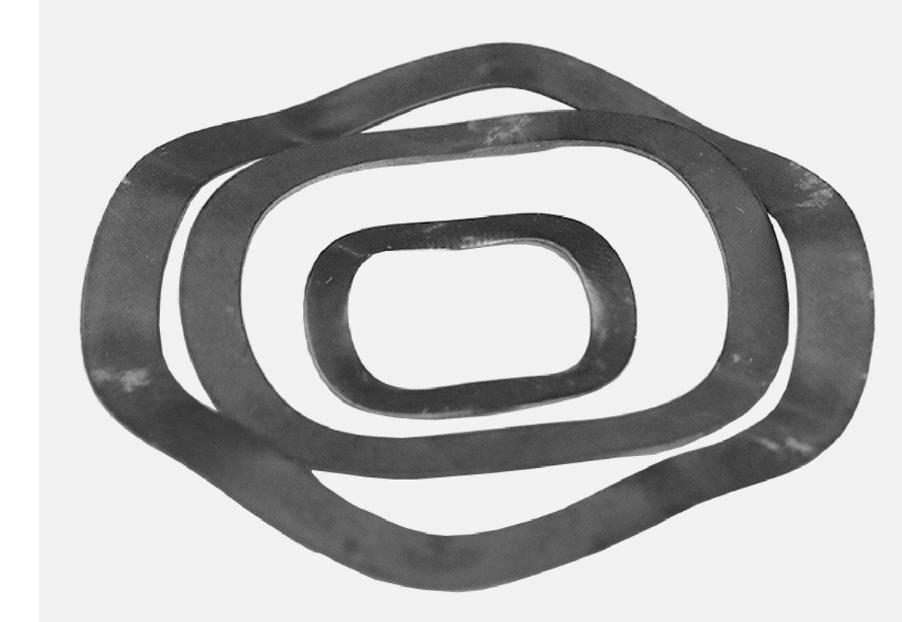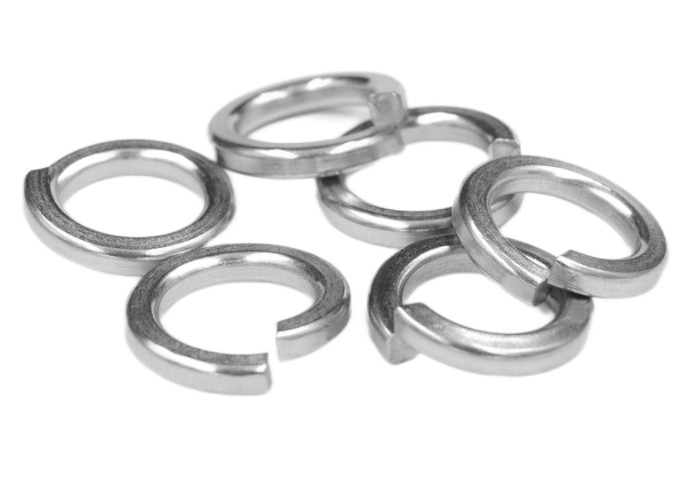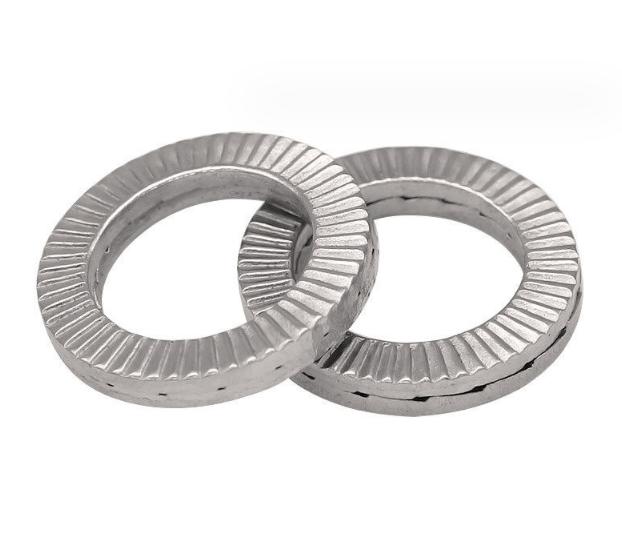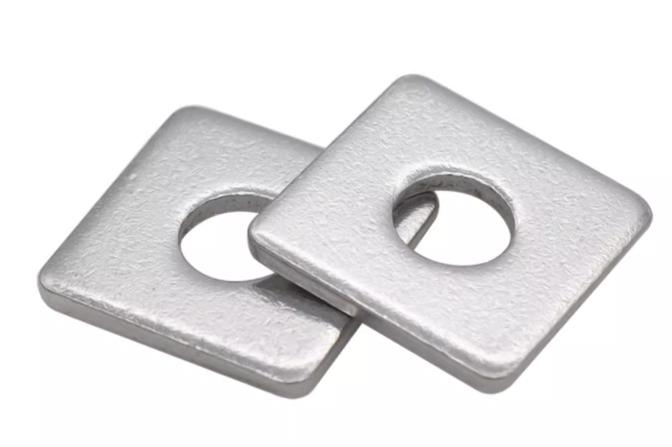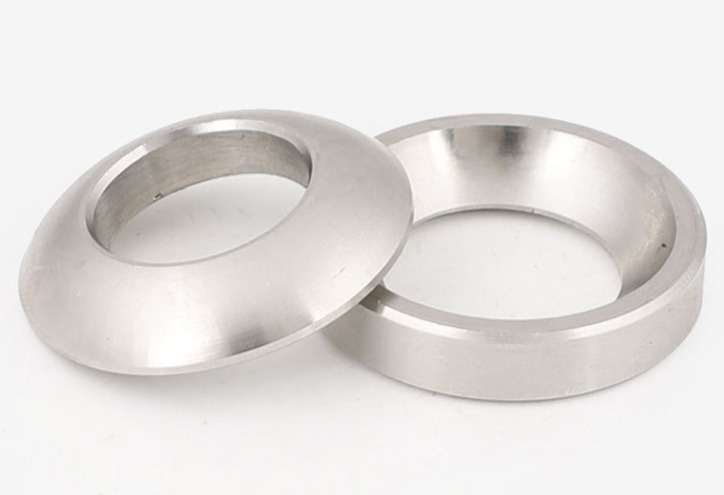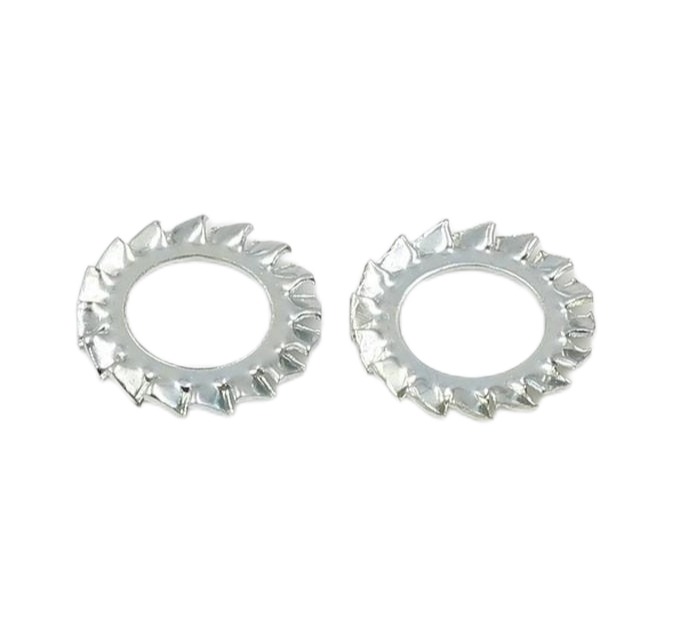Differences Between Lock Washers and Retaining Washers
Threaded connections are crucial components in various mechanical systems, ensuring that parts stay securely fastened. To enhance the reliability of these connections, washers are often used. Among them, lock washers and retaining washers are essential in preventing loosening and ensuring stability. Although both types serve to improve the reliability of threaded connections, their working principles and applications differ significantly. This article explores the differences between lock washers and retaining washers, their design characteristics, and guidelines for choosing the appropriate type based on specific working conditions.
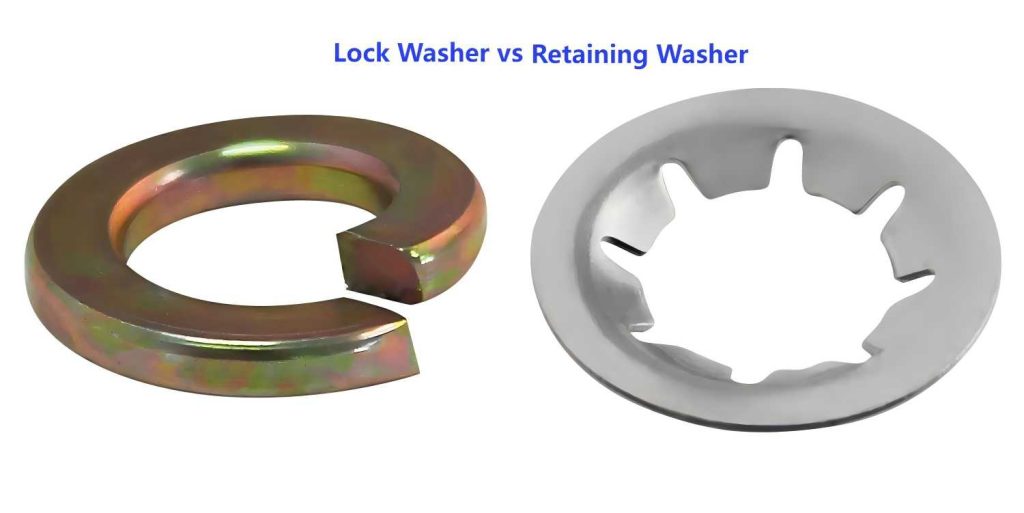
What are Lock Washers?
Lock washers are designed to prevent threaded connections from loosening due to vibrations, dynamic loads, or other external forces. They achieve this by either increasing the friction between the mating surfaces or employing a mechanical locking mechanism. Lock washers come in various designs, each suited for different applications.
How Lock Washers Prevent Loosening
Lock washers primarily work by increasing friction or creating a mechanical lock that resists loosening. This can be achieved in several ways:
- Simple Metal Washers: These washers increase the contact area between the nut and the surface, thereby enhancing friction.
- Special Structured Washers: These include designs such as double-sided toothlock washers or spring washers, which provide additional locking mechanisms.
Types of Lock Washers
There are several common types of lock washers, each with unique features designed to prevent loosening:
- Split Lock Washers: These washers have a split or helical shape that creates tension when the nut is tightened, preventing it from loosening.
- Tooth Lock Washers: These washers have teeth that bite into the mating surfaces, providing a mechanical lock.
- Spring Washers: These washers are designed to maintain tension and prevent loosening by compensating for the relaxation of the assembly over time.
Applications of Lock Washers
Lock washers are commonly used in environments where vibrations or dynamic loads are present, such as in automotive, aerospace, and machinery applications. They ensure that the threaded connections remain secure even under challenging conditions, preventing failures that could result from loosening.
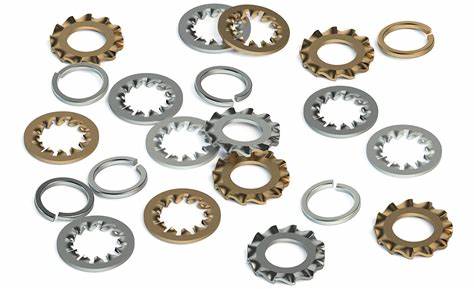
What are Retaining Washers?
Retaining washers, also known as locking or stop washers, are designed to prevent relative motion between threaded parts, primarily by physically blocking their movement. Unlike lock washers, which rely on friction or mechanical tension, retaining washers employ a more straightforward approach to securing connections.
How Retaining Washers Prevent Movement
Retaining washers typically feature one or more protruding parts that fit into grooves or slots in the mating surfaces. These protrusions physically block the relative movement of the parts, ensuring that the connection remains stable.
Design Features of Retaining Washers
The primary design features of retaining washers include:
- Protruding Parts: These parts can be tabs, tangs, or keys that engage with the grooves in the mating surfaces, preventing rotation or axial movement.
- Mechanical Locking Mechanism: The focus is on providing a stable mechanical lock that ensures the parts remain in their intended positions.
Applications of Retaining Washers
Retaining washers are used in applications where axial positioning and preventing rotational movement are critical. Common applications include securing shafts, gears, and other components that require precise positioning and stability.
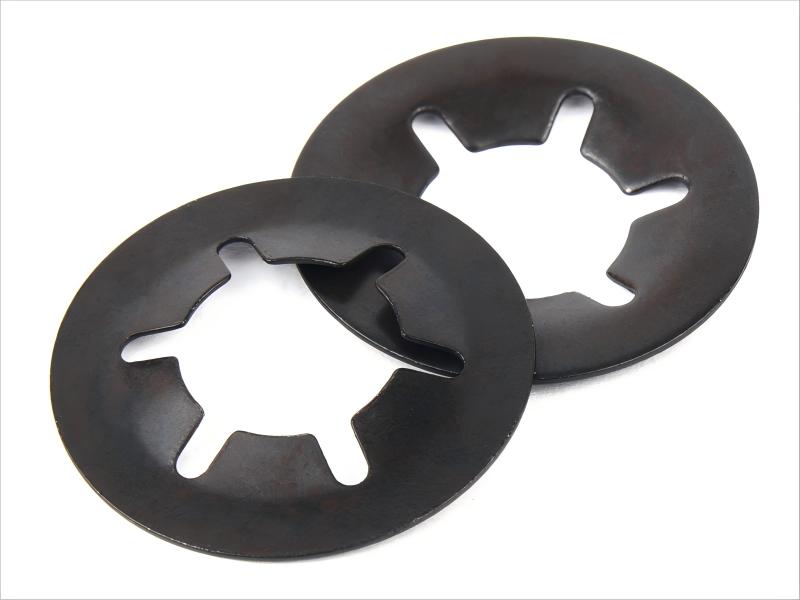
Design Differences Between Lock Washers and Retaining Washers
While both lock washers and retaining washers are used to enhance the reliability of threaded connections, their design focuses and features differ significantly to cater to their specific functions.
Design Features of Lock Washers
Lock washers are designed to prevent loosening by increasing friction and maintaining tension in the connection. Key design features include:
- Elasticity: Many lock washers, such as spring washers, have elastic properties that help maintain preload even under dynamic conditions.
- Friction-Enhancing Designs: Designs such as wavy, conical, or toothed shapes increase friction between the mating surfaces, enhancing the washer’s ability to prevent loosening.
Design Features of Retaining Washers
Retaining washers, on the other hand, are designed to provide mechanical locking and prevent axial movement. Key design features include:
- Protrusions: Retaining washers often have tabs, tangs, or keys that engage with grooves or slots in the mating surfaces.
- Focus on Stability: The primary design focus is on ensuring stable positioning rather than increasing friction.
Comparing Design Focuses
- Lock Washers: Designed to enhance friction and resist loosening through tension and mechanical locking mechanisms.
- Retaining Washers: Designed to provide stable axial positioning and prevent relative movement through physical blocking.
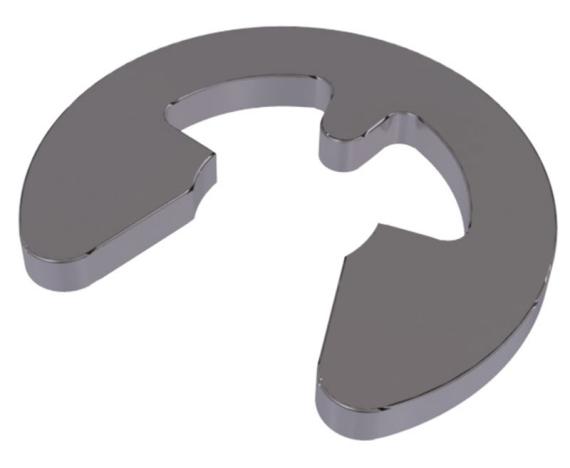
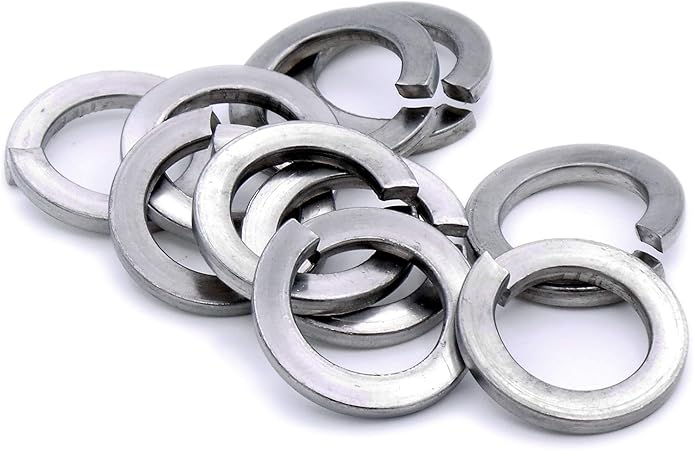
Choosing Between Lock Washers and Retaining Washers
The choice between lock washers and retaining washers depends on the specific engineering requirements and working environment. Each type of washer is suited for different applications, and understanding their strengths and limitations is crucial for making the right choice.
Scenarios Where Lock Washers are Preferable
Lock washers are ideal for applications where vibrations and dynamic loads are present. They are commonly used in:
- Automotive Applications: Ensuring that critical components, such as engine parts and suspension systems, remain securely fastened.
- Aerospace Applications: Providing reliable connections in environments subject to significant vibrations and dynamic forces.
- Machinery: Maintaining secure connections in industrial machinery subject to dynamic loads.
Scenarios Where Retaining Washers are Preferable
Retaining washers are best suited for applications where precise axial positioning and preventing rotational movement are critical. They are commonly used in:
- Securing Shafts: Ensuring that shafts remain in their intended positions without axial movement.
- Gears and Bearings: Providing stable positioning for gears and bearings in mechanical systems.
- Precision Equipment: Ensuring the stability of components in equipment requiring precise positioning.
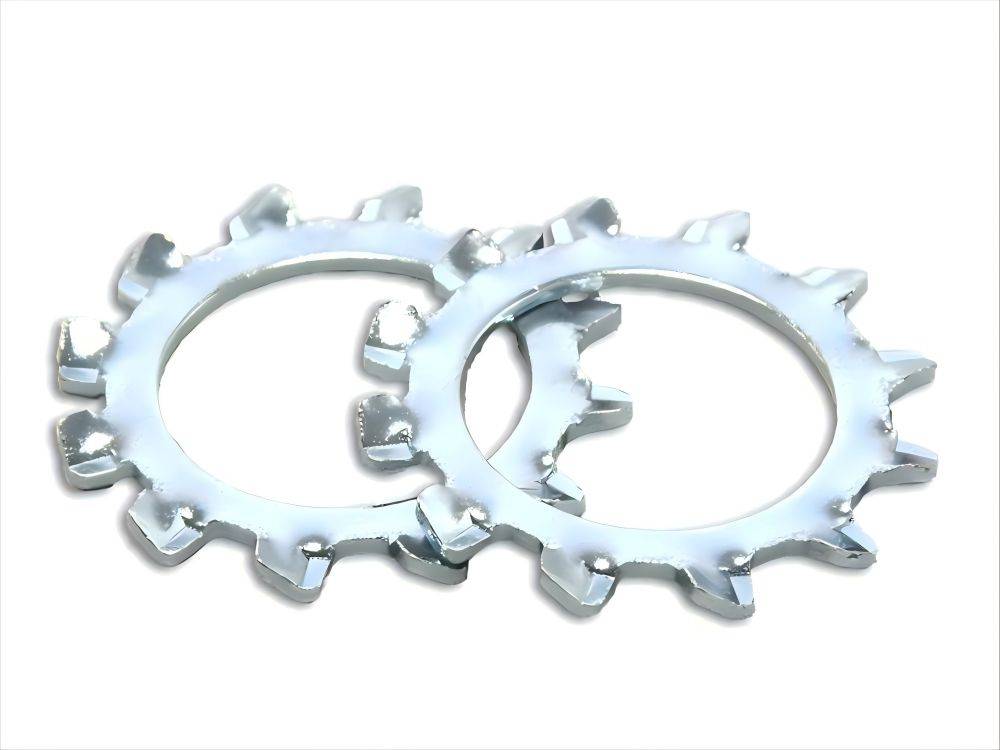
Why Use Lock Washers Under Vibrating or Dynamic Load Conditions?
Lock washers are specifically designed to perform well under conditions involving vibrations and dynamic loads. Their unique design features make them more effective than retaining washers in such environments.
1. Design for Dynamic Conditions
Lock washers often consist of two washers with radial and slanted teeth. When assembled, the slanted teeth face each other, while the radial teeth engage with the mating surfaces. This design creates a tension that resists loosening when the connection is subjected to vibrations or dynamic loads.
2. Mechanism of Resisting Loosening
When the connection experiences vibrations, the slanted teeth of the lock washers move relative to each other, creating an upward force that counters the loosening effect. This mechanism ensures that the connection remains secure even under challenging conditions.
3. Limitations of Retaining Washers in Dynamic Conditions
Retaining washers, while effective at preventing axial movement and providing stable positioning, lack the active mechanisms required to resist loosening under dynamic conditions. They are not designed to counteract the effects of vibrations and may not provide sufficient protection in such environments.
4. Advantages of Lock Washers
The unique design of lock washers makes them more suitable for maintaining connection stability under dynamic loads. They effectively reduce the risk of loosening due to vibrations, ensuring the safe and reliable operation of mechanical systems.
How to Select the Appropriate Washer Based on Working Conditions
Selecting the right washer for a given application involves evaluating the specific working conditions and understanding the requirements of the threaded connection. Here are some key considerations for choosing the appropriate washer:
Evaluating Working Conditions
- Vibration and Dynamic Loads: Determine if the application involves significant vibrations or dynamic loads.
- Temperature and Environmental Factors: Consider the operating temperature range and environmental conditions, such as exposure to corrosion.
Choosing the Appropriate Anti-Loosening Mechanism
- Friction-Based Locking: Suitable for applications with moderate vibrations.
- Mechanical Locking: Ideal for environments with high vibrations or dynamic loads.
- Structural Locking: Effective in preventing axial movement and ensuring stable positioning.
Considering Material and Temperature Resistance
- Material Selection: Choose materials that can withstand the operating temperature range and environmental conditions.
- Temperature Resistance: Ensure that the washer material is suitable for high-temperature environments, if applicable.
Ensuring Preload and Ease of Maintenance
- Preload Capability: Verify that the washer can handle the expected preload without deformation or loss of effectiveness.
- Maintenance: Consider the ease of replacing or adjusting the washer during maintenance operations.
Referring to Industry Standards and Past Case Studies
- Industry Standards: Consult relevant industry standards to ensure compliance with best practices.
- Engineering Case Studies: Review past case studies to understand the performance of different washers in similar working conditions.
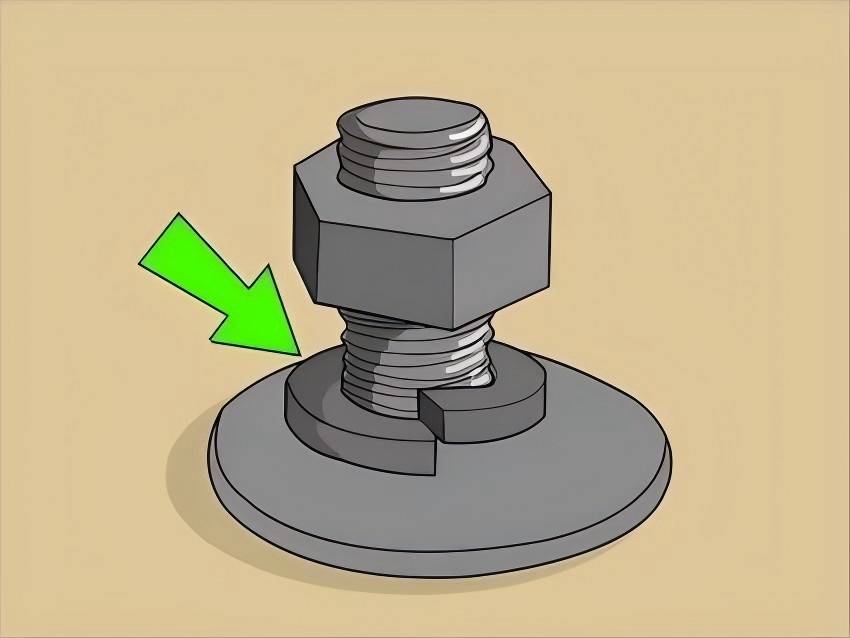
Conclusion
Lock washers and retaining washers are essential components in mechanical assemblies, each serving a distinct purpose. Understanding the differences between these washers and their respective design features is crucial for selecting the right type based on specific application needs. By evaluating working conditions, considering material suitability, and referring to industry standards, engineers can ensure reliable and safe threaded connections.

